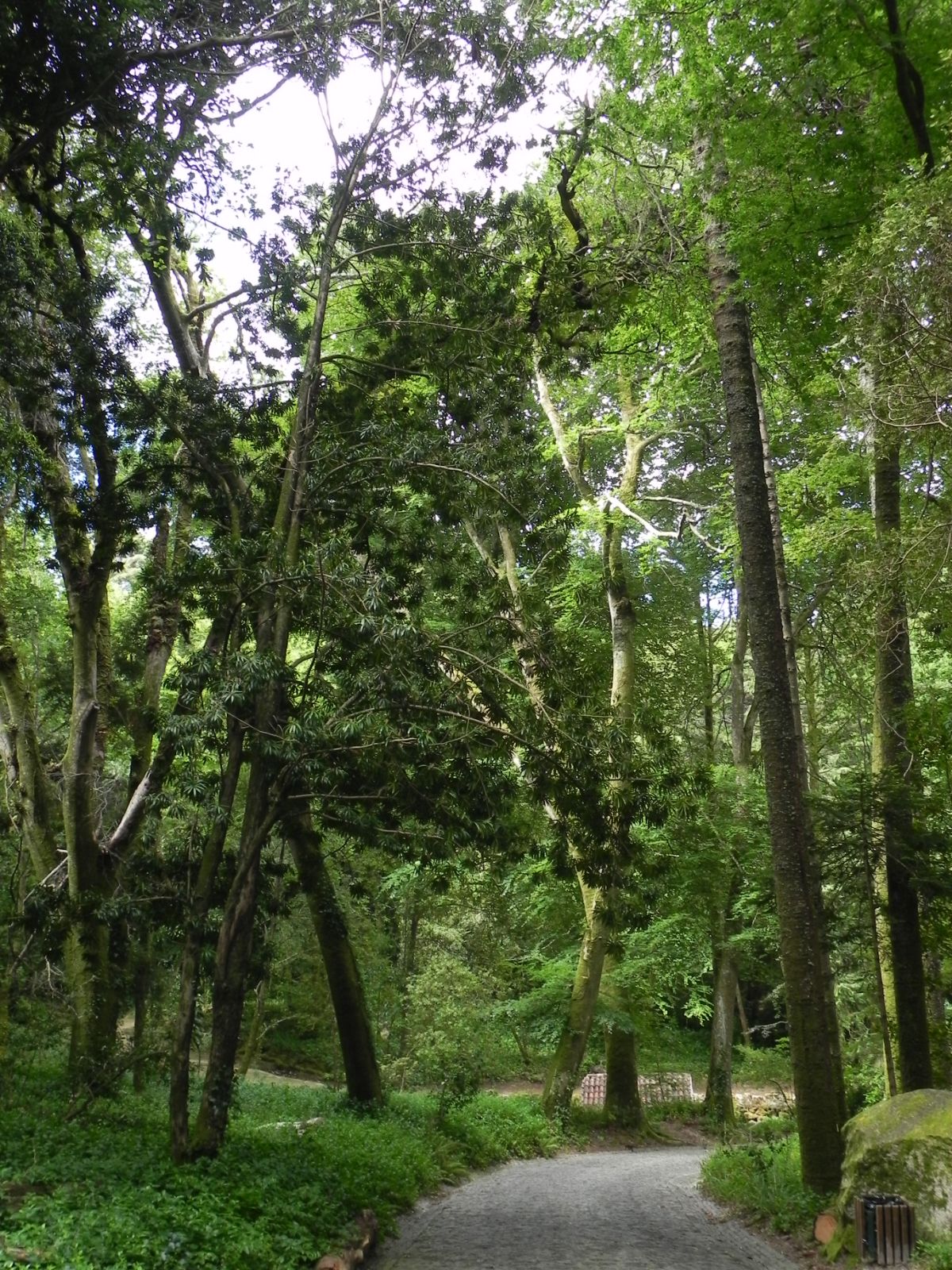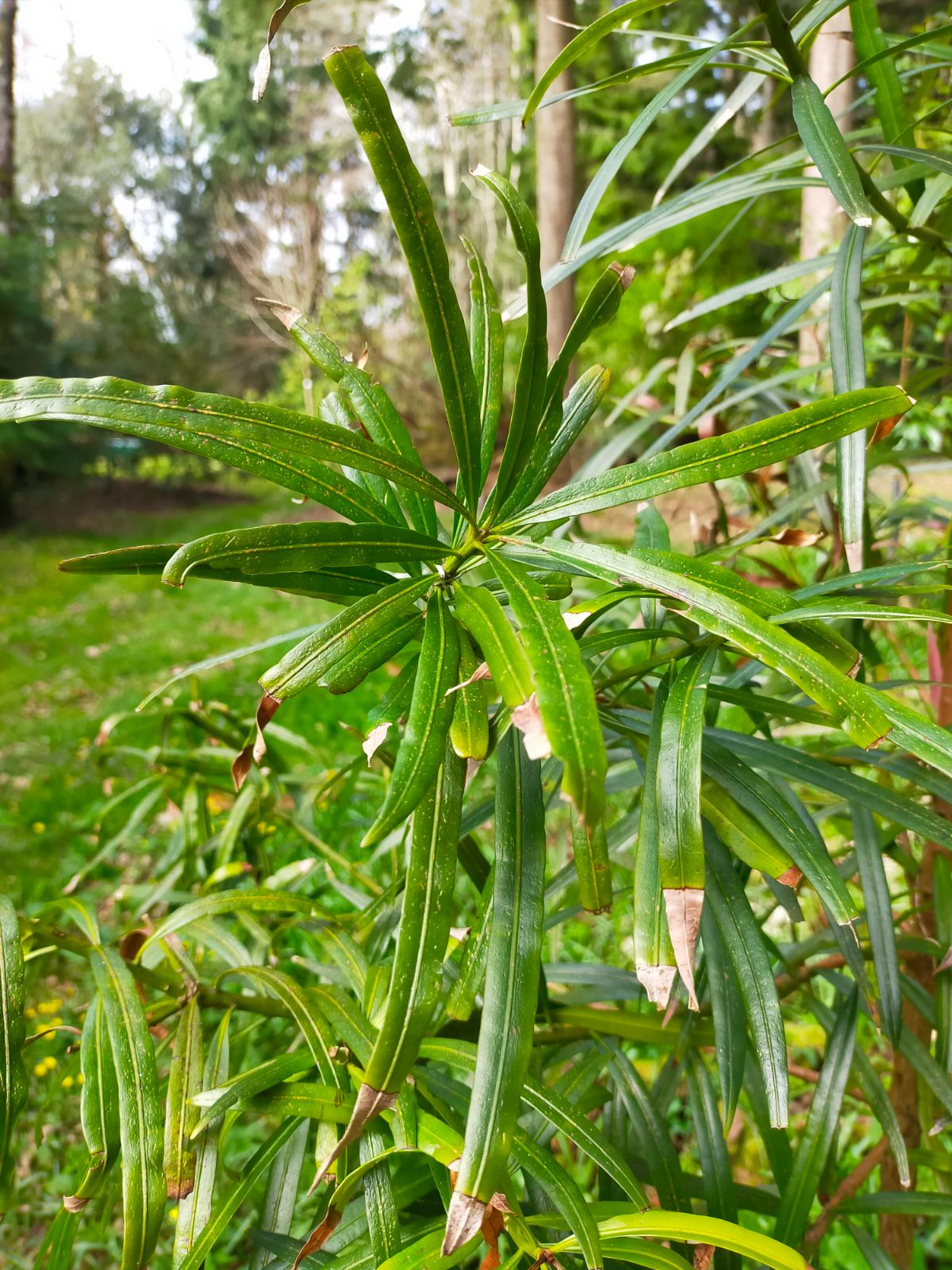Podocarpus neriifolius
Sponsor
Kindly sponsored by
The British Conifer Society in memory of Derek Spicer VMM, founder member.
Credits
Tom Christian (2023)
Recommended citation
Christian, T. (2023), 'Podocarpus neriifolius' from the website Trees and Shrubs Online (treesandshrubsonline.
Genus
Common Names
- Oleander Podocarp
- Brown Pine
- Thông tre lá dài
- 百日青 (bai ri qing)
- podo bukit
Synonyms
- Margbensonia neriifolia (D. Don) A. V. Bobrov & Melikyan
- Podocarpus annamiensis N.E. Gray
- Podocarpus annamiensis var. hainanensis Gaussen
- Podocarpus decipens N.E. Gray
- Podocarpus epiphyticus de Laub. & Silba
- Podocarpus neriifolius var. penibukanensis Silba
- Podocarpus neriifolius var. staintonii Silba
- Podocarpus polyanthus (Wasscher) Gaussen
Other taxa in genus
- Podocarpus acutifolius
- Podocarpus acutifolius × lawrencei
- Podocarpus acutifolius × nivalis
- Podocarpus acutifolius × totara
- Podocarpus brassii
- Podocarpus costalis
- Podocarpus drouynianus
- Podocarpus elatus
- Podocarpus elongatus
- Podocarpus guatemalensis
- Podocarpus henkelii
- Podocarpus laetus
- Podocarpus laetus × nivalis
- Podocarpus lambertii
- Podocarpus latifolius
- Podocarpus lawrencei
- Podocarpus lawrencei × nivalis
- Podocarpus macrophyllus
- Podocarpus matudae
- Podocarpus milanjianus
- Podocarpus nakaii
- Podocarpus nivalis
- Podocarpus nubigenus
- Podocarpus oleifolius
- Podocarpus parlatorei
- Podocarpus pilgeri
- Podocarpus pseudobracteatus
- Podocarpus salignus
- Podocarpus spinulosus
- Podocarpus totara
Tree to 45 m tall × >1 m dbh, occasionally shrubby. Bole straight or slightly fluted. Bark smooth, thin, exfoliating in papery strips on the largest trees; outer bark brownish, freshly exposed bark pinkish-brown. Branchlets slightly grooved, glabrous. Terminal buds 2–5(–8) mm long with spreading triangular to lanceolate outer scales. Leaves of juvenile plants short-petiolate, linear-lanceolate, 15–25 × 1.7–2.6 cm (smaller in cultivation), usually curved, margins undulating, base abruptly narrowing, apex long-acuminate or acute. Leaves of mature trees usually smaller, 6–15 × 0.8–1.8 cm with an acuminate apex in shade; 4–12 × 0.6–1.5 cm with acute apex in sun. Midrib raised on the upper leaf surface, flattened or raised beneath. Leaves dark green above, paler below with irregular lines of stomata either side of midrib ; young leaves flushing reddish or pinkish. Pollen cones sessile, solitary or in clusters of 2–3, long-cylindrical and lax at maturity, 25–50 × 2–3.5 mm, with several basal bracts. Seed cones solitary, on peduncles 5–20 mm long; receptacle subtended by 2 bracts swelling to become ellipsoid with a truncate apex, 8–10 mm long at maturity, yellow ripening orange to red. Seeds solitary, ovoid to globose, covered in a greenish epimatium, ripening purplish-green, 8–10(–15) × 7–8 mm. (Farjon 2017; Fu, Li & Mill 1999).
Distribution Bangladesh Myanmar Cambodia China Fujian, Guangdong, Guangxi, Guizhou, Hunan, Jiangxi, Sichuan, Xizang, Yunnan, Zhejiang India Assam Malaysia Philippines Thailand Vietnam
Habitat A scattered, ultimately emergent tree, primarily of evergreen broadleaf forest to 1500 m asl in warm-temperate south east Asia, to 2900 m asl in the montane tropical forests of Malesia, usually on well drained soils throughout. Associates in Asia commonly include evergreen Lauraceae and Fagaceae and other warm-temperate to sub-tropical conifers such as Amentotaxus and Nageia; in Malesia it frequently associates with other Podocarpaceae in mixed forests.
USDA Hardiness Zone 9-10
RHS Hardiness Rating H3
Conservation status Least concern (LC)
With a range extending from eastern Nepal and Bangladesh through south east Asia to Malesia (Plants of the World Online 2023), and possibly further still, to the islands of the western Pacific ocean (Farjon 2017; Debreczy & Rácz 2011), Podocarpus neriifolius is at once one of the most widespread members of the genus and one of the most variable. Like its northern cousin P. macrophyllus, P. neriifolius sits at the centre of a poorly researched and poorly understood species complex, and contemporary treatments vary widely in their approach. Farjon (2017) recognises two infraspecifics (var. neriifolius and var. degeneri N.E. Gray, the latter endemic to Fiji) while Flora of China (1999) recognises none, and the taxonomic notes of both works make for rather testing reading. Plants of the World Online does not recognise any infraspecifics and elevates the Fijian taxon to species rank as P. degeneri (N.E. Gray) de Laub. (Plants of the World Online 2023).
Material tentatively identified as P. neriifolius is cultivated outdoors in our area in only a handful of the very mildest gardens. Young plants at Tregrehan (Cornwall, UK) of Vietnamese and Chinese provenance were planted out in 2016 and 2020 respectively (Smith & Hudson 2017; T. Hudson pers. comm. 2022) and have so far survived successive winters up to the summer of 2023. Despite its expansive distribution it is only very rarely encountered in warmer gardens beyond our area, where the climate is better suited to it, but due to its superficial resemblance to P. macrophyllus some plants may not be accurately identified. Debreczy & Rácz (2011) observe that it may be distinguished by the following characters: longer leaves (to 20 cm); flattened, indistinct midvein on leaf undersides (cf. raised); pollen cones in clusters of 1–3 (cf. 3–5); seed cone with purplish-red epimatia and orange-red fleshy receptacles (cf. pruinose to dark purple epimatia and red to purple receptacles). The same authors have observed P. neriifolius in the northern parts of its range where it occurs in evergreen Lauraceae forest with the conifers Amentotaxus argotaenia, A. yunnanensis, Nageia fleuryi, and several Pinus spp. (Debreczy & Rácz 2011).


